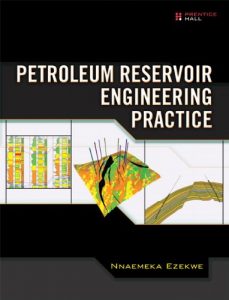The Complete, Up-to-Date, Practical Guide to Modern Petroleum Reservoir Engineering
This is a complete, up-to-date guide to the practice of petroleum reservoir engineering, written by one of the world’s most experienced professionals. Dr. Nnaemeka Ezekwe covers topics ranging from basic to advanced, focuses on currently acceptable practices and modern techniques, and illuminates key concepts with realistic case histories drawn from decades of working on petroleum reservoirs worldwide.
Dr. Ezekwe begins by discussing the sources and applications of basic rock and fluid properties data. Next, he shows how to predict PVT properties of reservoir fluids from correlations and equations of state, and presents core concepts and techniques of reservoir engineering. Using case histories, he illustrates practical diagnostic analysis of reservoir performance, covers essentials of transient well test analysis, and presents leading secondary and enhanced oil recovery methods.
Readers will find practical coverage of experience-based procedures for geologic modeling, reservoir characterization, and reservoir simulation. Dr. Ezekwe concludes by presenting a set of simple, practical principles for more effective management of petroleum reservoirs.
With Petroleum Reservoir Engineering Practice readers will learn to
• Use the general material balance equation for basic reservoir analysis
• Perform volumetric and graphical calculations of gas or oil reserves
• Analyze pressure transients tests of normal wells, hydraulically fractured wells, and naturally fractured reservoirs
• Apply waterflooding, gasflooding, and other secondary recovery methods
• Screen reservoirs for EOR processes, and implement pilot and field-wide EOR projects.
• Use practical procedures to build and characterize geologic models, and conduct reservoir simulation
• Develop reservoir management strategies based on practical principles
Throughout, Dr. Ezekwe combines thorough coverage of analytical calculations and reservoir modeling as powerful tools that can be applied together on most reservoir analyses. Each topic is presented concisely and is supported with copious examples and references. The result is an ideal handbook for practicing engineers, scientists, and managers—and a complete textbook for petroleum engineering students.






